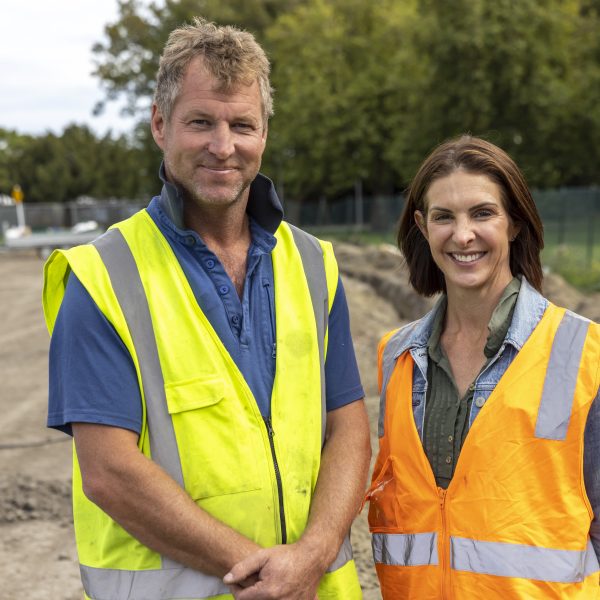
Penny and Gary Robinson have found that farmers using their subsurface drip irrigation system are saving on water and labour costs while growing more grass on their farms.
Gary and Penny Robinson have received positive feedback on water use efficiency and increased grass growth from Maniototo sharemilker, Luke Jeffries, after installing a Subsurface Drip Irrigation (SDI) system on the Central Otago farm.
Gary and Penny are involved in a Next Generation Farming project designed to help farmers meet tough nitrate caps while maintaining their viability. As part of this project, the couple are using innovation to demonstrate productivity and environmental benefits to their neighbours in the region and beyond.
Waimakariri Landcare Trust (WLT) and Waimakariri Irrigation Limited (WIL) have partnered with the Ministry for Primary Industries (MPI) for the project, with support from MPI’s Sustainable Food and Fibre Futures fund along with Environment Canterbury, Ballance, and DairyNZ.
Gary says the SDI trial on a 15-hectare block of the Maniototo Dairy Partnership farm which Luke sharemilks has highlighted the benefits of the system during a sweltering Otago summer.
“Luke has seen a huge response with the SDI, and we will be able to gather data from this block as it has a sprinkler irrigation system in the next paddock. I think the data that comes out of this will be positive.”
For Luke, irrigation is essential for his sharemilking operation as he relies on it to grow the grass to feed 1000 dairy cows.
“We are 400 metres above sea level, and only get about 450 millimetres of rain per year. Temperatures can reach up to 35C in summer, so our evaporation levels are through the roof. With SDI the water is going straight to the root zone which means we’re not losing water to evaporation.”
Luke says while he hasn’t got dry matter samples to confirm his findings yet, he estimates water usage savings of 40 percent through the SDI system and increased grass growth rates of 10 to 20 percent.
“There’s more grass growth in the paddock with the SDI installed. Along with the water savings, we are also saving on labour and maintenance. The system is fully automated, so we don’t need anyone move it and the maintenance costs are minimal when compared to a pivot which has more wear and tear.”
Based on results to date, Luke says the farm’s owners are considering installing more subsurface drip irrigation in other parts of the farm which are not suitable for traditional irrigation to improve efficiency.
“SDI is all about efficiency and farmers are being driven to efficient use of resources. This is a way to reduce water use while still achieving good grass growth rates.”
Improved public awareness about SDI is one of the key changes Penny has noticed over the past two years.
“At the start of the project, most people didn’t know much about subsurface drip irrigation, but I think with the increased emphasis on efficient use of resources, people are more aware of the benefits of the system, not just for farming but also for recreational areas and for recycling wastewater in residential subdivisions.
“It’s now accepted as a viable option and as we continue to focus on using resources more efficiently, I think more people will consider SDI as a sustainable choice for the future.”




